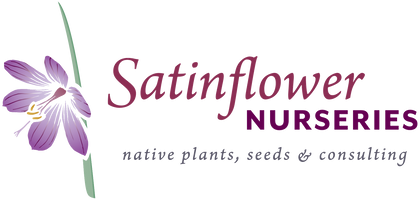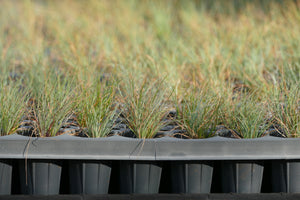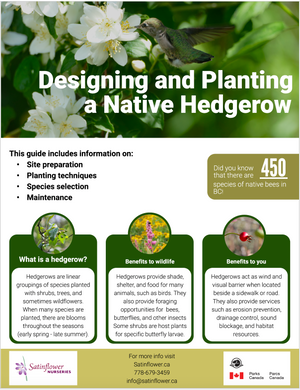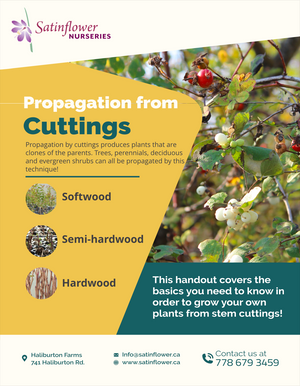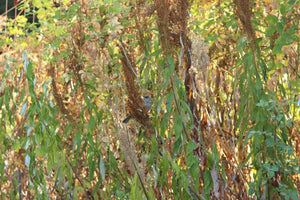Somenos Marsh OpenAir Classroom

We’re very pleased with some of the results so far at the OpenAir Classroom at Somenos Marsh Conservation Area. This work was lead by Elizabeth Aitken of the Somenos Marsh Wildlife Society. The role of Saanich Native Plants was to develop a restoration plan for the site and prescribe and provide native plants and seeds.
We first did baseline surveys and consulted with local experts including David Polster David Polster(Polster Environmental Services), Jared Bates (Cowichan Land Trust) and Mena and Peter Williams (Elders, Cowichan Nation).
The area pictured here was converted to a concrete parking lot underlain by hogfuel (unrefined mix of coarse chips of bark and wood fiber) sometime in the 1990’s. Plants previously planted in the site were struggling and winter flooding created additional challenges. We suggested planting a suite of species that are suitable for dry summer conditions, wet winter conditions, and gravel substrate. The site is sometimes completely under water in the winter, so much so that a California Sea Lion was seen swimming right over the area! In selecting appropriate species for the site we drew upon local examples of plants found in similar habitats on gravel substrate within our ecoregion like gravelly glacial outwash pockets on Southern Vancouver Island and those of the South Sound Prairies of Washington State. In October 2016, we did small trials to see what fared well into the following year prior to expanding our restoration footprint. Then, in fall 2017 we held a seeding event with a group of volunteers to seed the area. Prior to seeding we broke up the cover of non-native grasses so that the seeds could make good seed to soil contact. We included species like Yarrow, Nodding Onion, Pearly Everlasting, Common Camas, California Oatgrass, Tufted Hairgrass, Woolly Sunflower, Western Rush, Pacific Wood-rush, Large-leaved Lupine, Yampah, Self-heal, Douglas’ Aster, Barestem Desert-parsley, Sea Blush, Western Buttercup, Blue-eyed Grass, Roemer’s Fescue, and Fool’s Onion. Pots of species like Slimleaf Onion, Wild Strawberry, and mature Common Camas bulbs were also added. The Camas bulbs came from Streamside Native Plants We're observing the slow, but steady success of many of these species and will follow up through the season with you!
We first did baseline surveys and consulted with local experts including David Polster David Polster(Polster Environmental Services), Jared Bates (Cowichan Land Trust) and Mena and Peter Williams (Elders, Cowichan Nation).
The area pictured here was converted to a concrete parking lot underlain by hogfuel (unrefined mix of coarse chips of bark and wood fiber) sometime in the 1990’s. Plants previously planted in the site were struggling and winter flooding created additional challenges. We suggested planting a suite of species that are suitable for dry summer conditions, wet winter conditions, and gravel substrate. The site is sometimes completely under water in the winter, so much so that a California Sea Lion was seen swimming right over the area! In selecting appropriate species for the site we drew upon local examples of plants found in similar habitats on gravel substrate within our ecoregion like gravelly glacial outwash pockets on Southern Vancouver Island and those of the South Sound Prairies of Washington State. In October 2016, we did small trials to see what fared well into the following year prior to expanding our restoration footprint. Then, in fall 2017 we held a seeding event with a group of volunteers to seed the area. Prior to seeding we broke up the cover of non-native grasses so that the seeds could make good seed to soil contact. We included species like Yarrow, Nodding Onion, Pearly Everlasting, Common Camas, California Oatgrass, Tufted Hairgrass, Woolly Sunflower, Western Rush, Pacific Wood-rush, Large-leaved Lupine, Yampah, Self-heal, Douglas’ Aster, Barestem Desert-parsley, Sea Blush, Western Buttercup, Blue-eyed Grass, Roemer’s Fescue, and Fool’s Onion. Pots of species like Slimleaf Onion, Wild Strawberry, and mature Common Camas bulbs were also added. The Camas bulbs came from Streamside Native Plants We're observing the slow, but steady success of many of these species and will follow up through the season with you!
- Tags: restoration
- Paige Erickson-McGee
